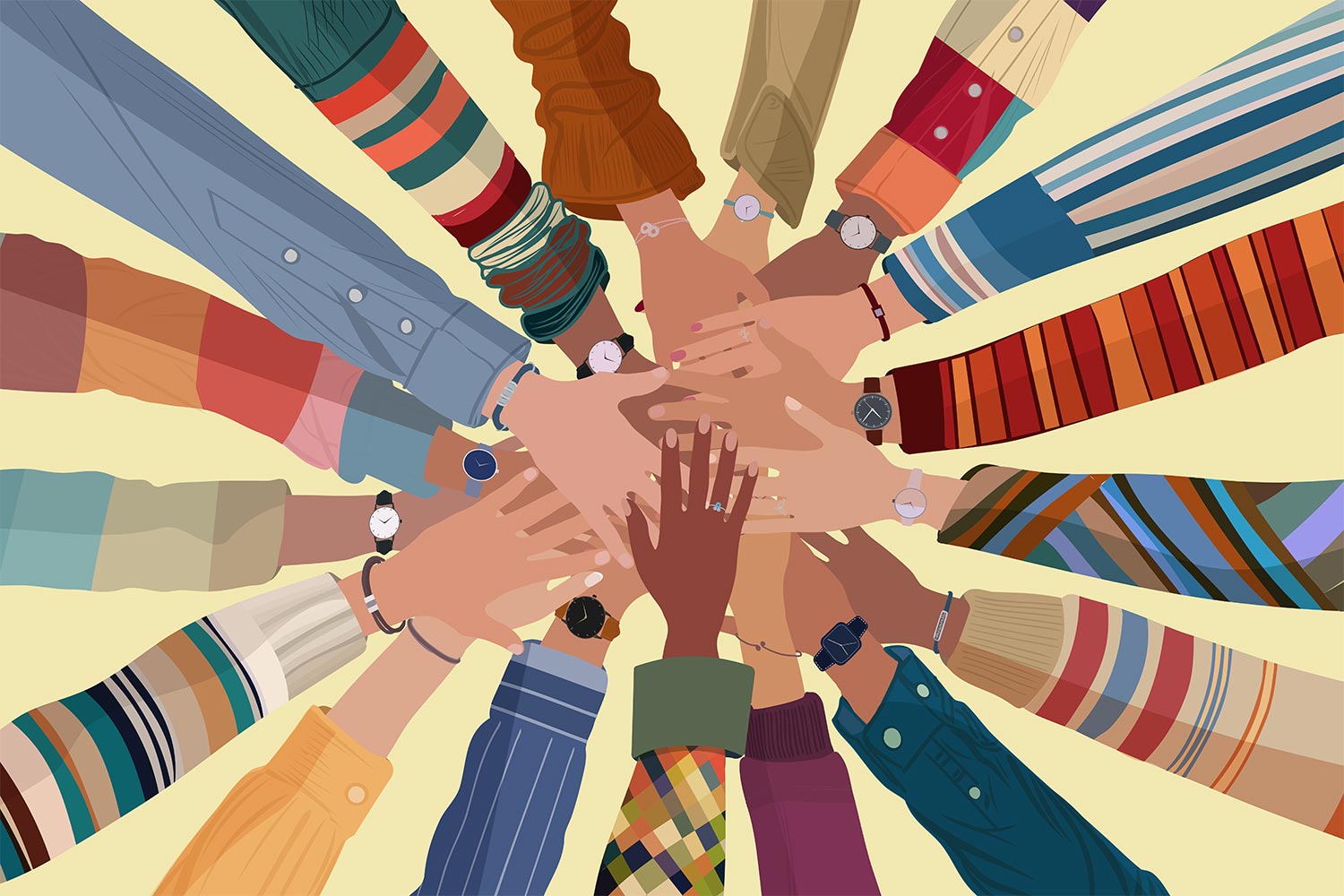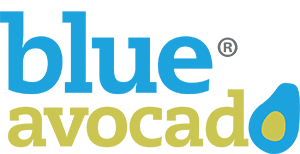How can nonprofits better collaborate and share resources with each other?
Nonprofit leaders share practical strategies for nonprofit collaboration, including trust-building, shared goals, technology use, and resource pooling to maximize impact and reduce redundancy.

In an era where collaboration is key to maximizing impact, nonprofits are increasingly seeking ways to work together more effectively.
When we recently asked the Blue Avocado community “How can nonprofits better collaborate and share resources with each other?“ — once again, nonprofit leaders came through!
Here’s a summary of some of the best answers we received:
Explore Shared Employment for Key Roles
At the Creative Education Foundation (CEF), we are convening Creative Problem Solving-facilitated conversations to address this very challenge. One idea we are exploring is shared employment of staff.
Not all nonprofits need or can afford full-time workers, but they do need expertise in programs, marketing, finance, tech, and more. We are exploring collaborative employment opportunities in which two or more nonprofit organizations share staff and split the bill for paying for that staff.
This will allow nonprofits to get the expertise they need while allowing nonprofit professionals to get competitive salaries.
— Beth from Creative Education Foundation
Five Key Strategies for Successful Nonprofit Partnerships
Nonprofits can better collaborate and share resources by focusing on clear goals, strong communication, trust-building, and leveraging technology. Key strategies include developing strategic alliances for efficiency, sharing data and platforms to reduce redundancies, pooling resources for shared initiatives like fundraising or advocacy, and creating formal agreements that outline roles and mutual benefits to foster successful, reciprocal partnerships.
1. Build a Foundation of Trust and Open Communication
- Foster Open Communication: Create forums for regular updates and idea-sharing, using platforms like Slack or Microsoft Teams to streamline communication.
- Build Trust: Acknowledge contributions, handle conflicts constructively, and promote inclusivity to create a collaborative culture where team members feel safe to share ideas and take risks.
- Be Transparent: Share information openly to build trust and a sense of shared responsibility among partners.
2. Establish Clear Goals and Structure
- Define Clear Goals: Collaborations should be driven by well-defined objectives, ensuring all partners understand the purpose and desired outcomes.
- Align Missions and Values: Seek partnerships with organizations that have complementary missions and shared values to ensure a focused and aligned approach to the work.
- Create Strong Governance: Establish clear leadership and governance structures, including shared leadership models where responsibilities are distributed.
3. Leverage Technology and Shared Resources
- Utilize Digital Tools: Implement project management tools, communication platforms, and collaborative software to streamline workflows and track progress in real-time.
- Share Infrastructure: Share resources such as office space, staff, technology, and specialized expertise to provide comprehensive support and reduce costs.
- Collaborative Fundraising: Partner on fundraising efforts to tap into new networks, reach new audiences, and combine resources and knowledge to identify new approaches.
4. Develop Strategic Partnerships
- Identify Complementary Strengths: Look for partnerships where an outside organization can bring new skills or resources that complement your existing capabilities.
- Pursue Strategic Alliances: Form alliances to tackle complex issues, share knowledge, and offer a broader range of services to the public.
- Consider Structural Options: For specific programs, a third-party fiscal sponsor can facilitate collaboration by providing a framework for project ownership and shared governance.
5. Maintain Reciprocal Relationships
- Ensure Mutual Benefit: Successful partnerships are reciprocal; each organization should gain value from the collaboration.
- Be a Good Partner: Uphold shared values, meet agreed-upon expectations, and be prepared to give as much as you receive from the partnership.
- Provide Feedback: Encourage and provide shared feedback, ensuring all parties feel involved and aligned on project status and goals.
— Erica from Florida Food Policy Council
Shared Resources and Possible Regional Conference
Definitely by sharing resources and costs — i.e., office space, grant writing/HR/accounting functions.
In a dream world, there would be a two-day regional nonprofit connection conference where we could all gather to network for a day and give three-minute overviews of our mission to find potential partners. On Day 2, we would do the same thing — but for funders/donors/financial advisors.
— Melissa from Centennial Area Health Education Center
Fiscal Sponsorships Boost Efficiency and Collaboration
Increase the use of fiscal sponsorships. Every good idea doesn’t have to be its own nonprofit. It could be a project of another established 501(c)(3).
Fiscal sponsorship models create efficient use of resources, collaboration among projects and programs that are aligned, and help reduce costs and admin for the sponsored project, thus allowing them to focus on outcomes.
An added benefit is increased, unrestricted revenue for the sponsoring organization.
— Hildie from GrowSmart Maine
Cross-Organizational Training Creates Connections and Resource Sharing
One way is to get their people in shared training events. This could be hosted training on topics relevant to their day-to-day work where it is open to other organizations or sending key staff to appropriate conferences.
When the staff is not isolated internally, they form natural connections with other programs, and the collaboration and resource-sharing flows out of those relationships.
— James Freeman from Training Grounds
Nonprofits Merge to Better Serve Community
Nonprofits with overlapping missions and service areas can collaborate in numerous ways:
- Referrals
- Grant writing
- Co-hosting events
- Shared spaces and resources
We recently merged and acquired another nonprofit. The merger grew out of a partnership that had developed as we referred clients, offers of in-kind donations, and more. It became apparent that the best way to serve our community was to truly combine our efforts.
— Jeane Spada-Allgood from LEAD with Horses
Collaborative Training Builds Nonprofit Partnerships
In my work with Take FIVE Training – 5 Key Steps to Focused, Impactful Volunteer Engagement, I’ve seen first-hand how nonprofits can collaborate effectively.
When multiple organizations come together for this type of training, they often unlock a range of benefits — funders are more inclined to support initiatives that unite efforts, and the exchange of ideas, resources, and connections helps build stronger partnerships that last beyond the workshop.
— Janet Capetty from Take FIVE Training
Collaboration on Leased Spaces Averts Budget Crisis
With pending budget cuts looming on the horizon, our management team reviewed the use of all our leased community spaces, several of which are used only weekends and one weekday, and are hoping to collaborate with agencies with similar mission statements to share office space and utilities.
— Patricia Parker from Family and Community Resources, Inc.
Nonprofits Partner to Create Mentoring Pipeline
Our local nonprofits are recommending women who have been through their programs to our new BreakThrough Mentoring program. These are women in the ALICE economic category — Asset Limited, Income Constrained, but Employed.
We ask local nonprofits to send us a letter of recommendation and we (or they) email the candidate the application to our program. Once their candidate is accepted into our program, we ask the nonprofit recommenders to check in on the candidate from time to time to see how they’re doing, how they like the program, etc. We also have members of two local nonprofits on our advisory committee.
— Linda Barker from AAUW Vero Beach
Strategic Partnerships Amplify Nonprofit Impact
Nonprofits can better collaborate and share resources by forming partnerships based on shared goals and complementary strengths, just like we do. For our food nourishment program, we partner with Food Rescue DC, Hungry Harvest, and Food for Health to pool resources and expand access to nutritious food.
Our film series is made possible through collaborations with ReelAbilities Greater Washington, DC Black Pride, and Trans Pride Washington, DC, which help us reach diverse audiences and provide inclusive cultural programming. We also work closely with Damien Ministries to offer HIV/AIDS testing, ensuring vital health services are accessible to our community.
These partnerships allow us to leverage each organization’s expertise and networks, creating a stronger collective impact without duplicating efforts. Through regular communication and coordinated efforts, we can share resources efficiently, align our programs, and better meet the varied needs of the LGBTQ+ community we serve.
By working together, we amplify our reach and effectiveness, ultimately providing more comprehensive support to those who rely on us.
— Paul Marengo from The DC LGBTQ+ Community Center
Highlighting Intangible Assets for Greater Impact
A former board chairman of mine, who is now deceased, would say to me, “We must first come from a position of strength.” I have never forgotten his words, and he was correct. At that time, I was directing a 501(c)(3) nonprofit organization, and on occasion, we went before the city council about concerns or funding considerations.
Quantitative measures and numbers can be impressive; however, there is something very valuable that nonprofit organizations bring to the table that often is not measured, and that is intangible assets. Intangible assets are the specialty and organizational membrane of nonprofit entities.
Linking and networking with similar organizations that share a mission or common areas of interest can be a lifesaver, and especially now in the dynamic environment that we are experiencing.
As the saying goes, “if you always do what you have always done, you will get what you always got.” I support collaboration and sharing resources.
— Dr. Barbara Milon from Division of Civilian Oversight City of St. Louis
Creating Statewide Consortium to Generate Shared Savings
There are five Area Agencies on Aging in Vermont. Two years ago, we created the Vermont Aging Nework Consortium (VANC) as its own standalone 501(c)(3).
Over time, VANC will be taking on all of the back-end functions of our agencies, things like IT, accounting, purchasing, etc. — plus will be doing group buying of things like medical, dental, and vision insurance, as well as all other insurance products we all have to carry.
VANC will also be able to enter into statewide contracts with government and other entities for new fee-for-service income streams.
We estimate that when this all in place, we, as a group, will be saving hundreds of thousands of dollars a year in shared savings, and will be able to generate an as yet to be determined amount of new income.
— John Mandeville from Central Vermont Council on Aging
Leading with Strengths, Not Weaknesses
Be courageous! Center the people we serve — not our respective organizations.
Start from an asset-based lens. Instead of asking questions like, “What are the gaps and challenges?” lead with questions like, “What awesome resources, talents, and relationships do we all bring to the table to this project?”
— Cindy Wilcox from Human Services Coalition
Rethinking Redundancy: A Call for Mergers & Deep Collaboration
As with cities across the U.S., and particularly in areas with rich nonprofit ecosystems, it’s not uncommon in Denver to find a dozen organizations all offering “trauma-sensitive yoga.”
While the passion and intentions behind these programs are commendable, the fragmented nature of these efforts often leads to competition rather than collaboration, burnout among instructors, and inefficient use of funds.
Is it truly necessary to have so many siloed programs offering the same service — often to overlapping communities?
A reframe is overdue: Rather than competing for limited funding, space, and qualified instructors, nonprofits could explore structured collaboration or even mergers that align visions and centralize core resources.
A collaborative trauma-sensitive yoga initiative could:
- Offer classes tailored to distinct populations: Communities of color, LGBTQ+, seniors, survivors of violence, low-income communities, plus-sized and body-positive communities, people with disabilities, and those practicing specific faith traditions (e.g., Muslim women requiring gender-segregated or modest environments).
- Expand access through multiple formats — in-person, online, in jails, homes, or shelters.
- Provide classes in multiple languages through concurrent interpretation, expanding cultural and linguistic access.
- Eliminate duplicative expenses such as chairs, mats, bolsters, blocks, straps, and studio rentals by centralizing supplies and equipment.
- Pool talent to reduce reliance on the “highest-paying agency” model and allow instructors to teach across programs.
- Enable cross-training, mentorship, and advancement opportunities for emerging teachers from overlooked demographics.
- Create a shared evaluation framework to explore and rigorously document the long-term benefits of community-led, culturally responsive yoga compared to more corporate, i.e. CorePower, offerings.
The resistance to these kinds of mergers often comes down to mindset: The belief that “no one can do it like we do.” But this scarcity-driven thinking often limits scalability and sustainability. Funders, too, are burdened with the impossible task of selecting which group to fund based on brand reputation rather than measurable impact.
A collaborative, equity-centered model invites deep impact over wide dispersion. It creates a system where the work can become stronger, not diluted, and where community wellness is treated as a collective responsibility — not a competitive hustle.
— Cathy Phelps from Community-Centered Trauma Solutions
Note: The opinions and product/service recommendations expressed above are solely those of the participants and do not necessarily represent those of Blue Avocado. Submissions may be edited for length and clarity.
Your Voice Matters!
Help other nonprofits grow by sharing your knowledge and insights with a chance to be featured in the next Ask the Blue Avocado Community results.
You might also like:
- What is your nonprofit’s approach to planning for leadership succession?
- What area of your nonprofit has benefited the most from having a specialist on your team?
- What has been a “happy accident” that ended up benefitting your nonprofit?
- What do nonprofits struggle with the most?
- Post-pandemic, what has changed for the better (or worse) in your nonprofit?
You made it to the end! Please share this article!
Let’s help other nonprofit leaders succeed! Consider sharing this article with your friends and colleagues via email or social media.
About the Author
Blue Avocado is an online magazine fueled by a monthly newsletter designed to provide practical, tactical tips and tools to nonprofit leaders. A small but mighty team of committed social sector leaders produces the publication, enlisting content from a wide range of practitioners, funders, and experts.
Articles on Blue Avocado do not provide legal representation or legal advice and should not be used as a substitute for advice or legal counsel. Blue Avocado provides space for the nonprofit sector to express new ideas. The opinions and views expressed in this article are solely those of the authors. They do not purport to reflect or imply the opinions or views of Blue Avocado, its publisher, or affiliated organizations. Blue Avocado, its publisher, and affiliated organizations are not liable for website visitors’ use of the content on Blue Avocado nor for visitors’ decisions about using the Blue Avocado website.







